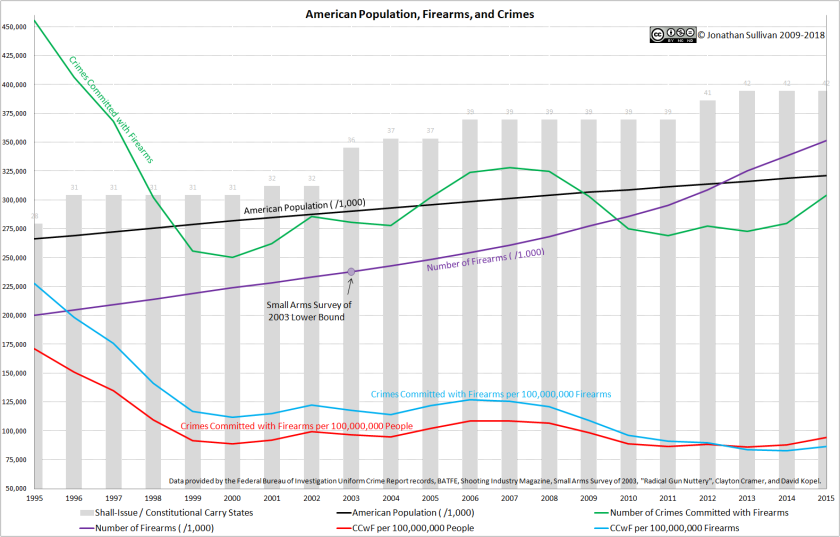Pop quiz time. For the sake of argument, assume you are on the receiving end of an unlawful assault at this very moment. Your courses of action are as follows:
- Attempt no form of self-defense.
- Attempt to defend yourself against the perpetrator at all.
- Attempt to defend yourself against the perpetrator specifically using a firearm.
Which of those options do you think will have the lowest probability of you being injured in the situation?
Does your answer change if we are talking about a robbery, as opposed to an assault?
Does your answer change again if we are talking about the lowest probability of your property being stolen from you during a robbery?
Now, remember your answers. Because, based on this Critical Review of Firearms and Violence by the National Research Council of the National Academies, here are the realities:
In other words, you are almost half as likely to get hurt during a robbery if you employ a firearm to fight back, you are over three quarters less likely to lose personal property during a robbery if you use a firearm to defend yourself, and you are about half as likely to sustain injury during an assault if you stop the attacker with a firearm.
Well then.
It is almost like the “gun control” extremist’s notion of “give them what they want and they will go away” is… nonsense.
About now you will be noticing that while defending yourself with a firearm is strictly better than not defending yourself at all, “all” forms of self-defense are… not as much a sure bet. The reason for this is simple:
Criminals are not idiots.
The 250lbs. thug is not going to try to assault a 400lbs. linebacker. Nope, he is going to go for the 90lbs.-soaking-wet cheerleader, and when she tries to fight back with her bare hands, guess what? It is highly likely that she is going to lose – and get injured in the process – simply due to mass and strength.
Provide her a firearm and a modicum of training, however? Well, there is a reason why people say, “God made man, Sam Colt made them equal”, or why other people describe firearms as civilization itself.
Given this data, one really has to wonder why “gun control” extremists want to massively increase your chances of being injured or losing property during an assault or robbery. Perhaps your safety is not actually their priority?
(Incidentally, while the post is outdated, the results are approximately mirrored for shooting rampages – fighting back at all is better, but fighting back effectively (i.e. with firearms) is best.)



